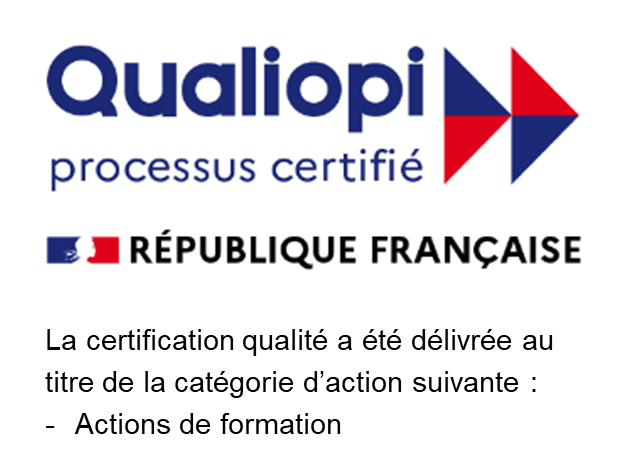Beyond Competence: Embracing Intercultural Viability for Business Success
Interview with Dr. Milton J. Bennett
“What improves communication is our ability to understand how somebody else is organizing their perception differently, and that they may be doing that because they belong to a different ethnic, racial, or generational group. It’s understanding that — and then being able to empathize with that to shift our perspective sufficiently — that enables us to actually improve communication.”
Dr. Milton J. Bennett
Founding Director & CEO
Intercultural Development Research Institute (IDRInstitute)
Have you ever wondered why some global teams thrive, while others struggle to collaborate effectively? The answer often lies in how well they navigate cultural differences. Intercultural training isn't just something that’s nice-to-have, it’s a critical component for fostering productive communication among diverse teams, whether they work in-house or remotely. It shapes the kind of customer service that respects different cultural values and global differences in how exceptional service is defined. This training is essential for boosting collaborative productivity and innovation within your organization – and enhancing customer satisfaction in external markets. But with so many differences in cultural communication styles and customer values, how can an organization hope to keep up?
Your Intercultural Trainer Needs to Stay Current –
so You Can, Too
For organizations to reap the benefits mentioned above, they need to work with a skilled intercultural training provider that stays informed regarding current academic research – and adapts their methods and best practices to reflect new findings. Recently, we interviewed Dr. Milton J. Bennett for his thoughts on what effective intercultural training should consist of today and how to better facilitate that training to benefit organizations with diverse workforces and target markets. A globally renowned sociologist, Dr. Bennett is the creator of the Developmental Model of Intercultural Sensitivity and co-creator of the Intercultural Viability Indicator, a tool that reveals how organizations can create a climate of respect for diversity and develop strong relationships between colleagues.
He states, “Working interculturally used to be an unusual activity, but today it is something inevitable, which is impacting or will impact every employee’s job. In today’s world of business every operation is essentially a multicultural operation, whether one is working from a home office or travelling the world as a mobile talent.” Rather than simply taking a tactical approach that forces one group to adapt to another by losing their own established culture, taking a strategic approach asks how we could coordinate two groups, maintaining their differences in a way that would be of greater value to the organization. More than just training for cultural competence, businesses should strive for intercultural viability.
During our enlightening conversation, we discussed the ways cultural perception has evolved, approaches to intercultural training today, and what organizations with global interests and workforces should prioritize when it comes to intercultural training methods.
At NetExpat, we’re dedicated to providing our clients with relevant and impactful intercultural training and have already begun incorporating Dr. Bennett’s wisdom and suggestions into our clients’ intercultural training programs. Dr. Bennett states, “relevant intercultural training today must address a much broader definition and a more dynamic idea of culture. We need to be thinking of culture in terms of group identity, not just national identity. Culture is more than a set of beliefs; it is something that people are doing.”
Why Intercultural Effectiveness is Crucial for Organizational Success
Studies show that ignoring cultural differences can result in negative business impacts, from employee disengagement to profit losses. Let’s take a look at some of the issues that can develop when companies fail to prioritize intercultural training:
"If you want to change a company’s culture, you need to first change the way an organization coordinates behavior and meaning. That’s very different than just rewriting a mission statement. It’s a question of changing the relationship between individual competence and organizational support.”
Dr. Milton J. Bennett,
Founding Director & CEO
Intercultural Development Research Institute (IDRInstitute)
Team/Workforce Impacts:
Intercultural misunderstandings can happen under the best of circumstances. When they do, it has costly downstream impacts for employers, including team friction and misalignment, wasted time and reduced productivity, unmet goals and deadlines, potential damage to the company’s market reputation, disengaged employees, talent losses when employees feel marginalized, and ultimately, adverse effects on their bottom line. Surprising to many organizations is the fact that virtual teams can be especially vulnerable to intercultural misunderstandings, due to limited visual cues and gestures that have different meanings from culture to culture.
Customer Service:
Many companies believe that if they simply train their staff to “treat others the way they'd like to be treated themselves,” every customer will be satisfied. But in today’s global marketplace, workforces – and the global markets they serve – reflect cultures that have very different values and expectations when it comes to customer service standards, preferences and purchasing behaviors. Put simply, an employee who is dedicated to one culture’s definition of outstanding customer service may end up unintentionally offending a customer who comes from a different culture. Ignoring cultural differences can lead to customer dissatisfaction, brand trust issues, employee frustration and burnout, and even lost business.
Company Culture:
A strong company culture is often cited as a key driver of organizational success, but when cultural differences are ignored, it can undermine the very foundation of any company’s culture. Intercultural misunderstandings can lead to a lack of cohesion and trust among employees, further resulting in distrust of the organization’s leadership. A company culture that fails to embrace and celebrate cultural differences and diversity can struggle to attract and retain top talent, particularly in a globalized job market. Ultimately, the lack of prioritization can also erode the sense of unity and shared purpose that is essential for a thriving organizational culture, impacting everything from employee satisfaction to overall business performance.
Foster an Intercultural Mindset. Drive Business Success.
By prioritizing effective intercultural training, employees and employers reap the benefits of enhanced collaboration and productivity – and more positive customer experiences that lead to higher satisfaction rates. To accomplish this, Dr. Bennett recommends that businesses encourage a cognitive shift toward understanding that people organize their thoughts and perceptions differently, an emotional shift toward creating empathy, and a strategic shift to see cultural differences as an asset to the organization. We encourage you to download the full interview below for additional insights, or watch the short videos listed below:
Changing Perceptions of Culture
Over time, the definition of culture has evolved from a rigid, nationalistic view to a more fluid understanding influenced by various identities. Dr. Bennett argues that true culture is shaped by how people coordinate behaviors within their group, beyond just national labels and artifacts like basic do’s & don’t’s or customs.
Unpacking Corporate Culture
Dr. Bennett explains that changing corporate culture involves altering how an organization coordinates behavior and meaning, rather than just rewriting mission statements. Effective cultural change requires aligning individual competence with organizational support, ensuring competent individuals can effectively contribute within the organization.
New Focus in Intercultural Training
Dr. Bennett highlights that intercultural training now targets a broader audience, impacting both tactical and strategic levels. Effective intercultural communication requires understanding and empathizing with different perspectives. Strategically, cultural differences should be seen as assets, with organizations fostering relationships between individual competence and organizational support to leverage these assets.
Reviewing Intercultural Training Methods
Dr. Bennett explains that changing corporate culture involves altering how an organization coordinates behavior and meaning, rather than just rewriting mission statements. Effective cultural change requires aligning individual competence with organizational support, ensuring competent individuals can effectively contribute within the organization.
Download Full Interview
For additional information on how NetExpat can help your organization enhance your employees’ intercultural agility and improve your customer service initiatives in global markets, contact us at:
info@netexpat.com
Share this post














